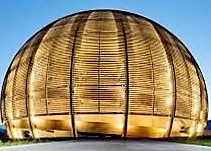Speaker
Description
Neutron-induced reactions remain at the forefront of experimental investigations for the understanding of stellar nucleosynthesis and chemical evolution of the Galaxy in the region of medium- and heavy-mass nuclides [1]. We report on measurements of the cross section of neutron capture reactions $^{74,80,82}$Se$(n,\gamma)$ and $^{138,140,142}$Ce$(n,\gamma)$ relevant, respectively, to the weak and main $s$-processes. The $^A$Se data complement our recent study of the $^{69,71}$Ga stellar $(n,\gamma)$ reactions in the weak $s$-process regime [2]. The proton rich isotope $^{74}$Se is a p nuclide, shielded from the $s$ and $r$ processes by stable nuclei in the region. The disentanglement of the different heavy-nuclide synthesis modes ($s$-, $r$- and $p$-processes) requires reliable and precise stellar neutron-capture cross sections. Such is the case also for the Ce isotopes [3]. In particular, $^{140}$Ce is found to be one of the most important nuclides in the network of $s$-process reactions, affecting the abundances of a large number of isotopes [4]. The experiments were performed by the activation technique using a high-intensity (3-5$\times 10^{10}$ n/s) quasi-Maxwellian neutron beam that mimics conditions of stellar $s$-process nucleosynthesis. The neutron field was produced by a mA proton beam at E$_p$=1925 keV (beam power of 2–3 kW) as part of our experiment campaign at the Phase I of Soreq Applied Research Accelerator Facility (SARAF) [5], bombarding the Liquid-Lithium Target (LiLiT) [6,7]. The cross sections were measured by counting the resulted nuclei activities via $\gamma$ spectrometry with a high-purity germanium detector.
This work was supported by the Pazy Foundation (Israel). M.P. acknowledges support by the European Union (ChETEC-INFRA, project no. 101008324).
[1] F. Kaeppeler et al., Rev. Mod. Phys. 83, 157 (2011).
[2] M. Tessler et al., Phys. Rev. C 105, 035801 (2022)
[3] F. Kaeppeler, et al., Phys. Rev. C 53, 1397 (1996)
[4] A. Koloczek, et al., At. Data Nucl. Data Tables 108, 1 (2016)
[5] I. Mardor, et al., Eur. Phys. J. A 54, 91 (2018)
[6] S. Halfon, et al., Rev. Sci. Instrum. 85, 056105 (2014)
[7] M. Paul, et al., Eur. Phys. J. A 55, 44 (2019)
